92 F. high in the Twin Cities Wednesday. Midday
clouds/showers kept us 1-3 F. cooler than we would have been otherwise.
Yesterday was the 25th day above 90 this year.
99 F. reported at Canby, Minnesota.
96 F. high at Madison, Minnesota yesterday.
83 F. average high for August 1.
83 F. high on August 1, 2011
Severe threat late Friday.
20-30 mph wind gusts possible by Saturday, as the coolest air since mid-June arrives.
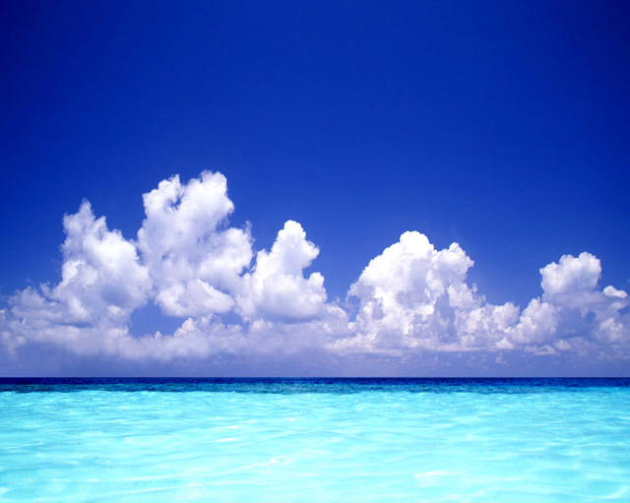
"...
it's been so hot in Minnesota, even ifs famous lakes provide
little relief....We have temperatures probably pushing 90 degrees in
some of our shallow lakes....causing fish kills in at least 25 lakes." - from NBC Nightly News with Brian Williams on Wednesday.
89.9 F. average high temperature in the Twin Cities during the month of July. Only two months have been warmer, in 1988 and 1936.
May, 2011. Last time the Twin Cities, St. Cloud and Eau Claire all had below average temperatures for a given month.
 Big Changes Ahead
Big Changes Ahead.
Expect upper 80s today (dew points in the low to mid 60s); the mercury
heats back into the low 90s - with potentially severe T-storms late
Friday and Friday night. Saturday looks windy (gusts to 25 mph) as
cooler air approaches - readings holding in the mid 70s Sunday with a
BIG
drop in dew point (low 50s). Yes, you can
expect a hint of autumn by Sunday morning. We heat into the 80s again
next week, although excessive heat should stay just south of Minnesota;
the best chance of significant rain next Friday, based on ECMWF
guidance.
Ernesto? NHC is tracking "Tropical Depression 5",
forecast to become a Category 1 hurricane in the Caribbean by next
Monday. Initial models seem to steer the storm on a southerly track, but
there's still a 1 in 3 chance "Ernesto" may enter the Gulf of Mexico.
The storm is packing 35 mph winds - it'll become a tropical storm once
sustained winds reach 39 mph. Map courtesy of
Ham Weather and Alerts Broadcaster.
24 tornadoes, nationwide, in July,a new record low -
the result of persistent heat and drought. Canada saw more tornadoes
than the USA last month, which is highly unusual. Details from Climate
Central below.
Friday Tornado Potential? This may be premature, but
some of the model (analogs) are hinting at many of the dynamics coming
together for possible tornadoes Friday. The approach of (much) cooler
air will whip up strong wind shear, with enough instability in front of
the advancing cool front for a few potentially tornadic supercell
thunderstorms. Click on the raw analog guidance from
CIPS here. Thanks to Randy Petersen for passing this link along.
Friday Severe Threat. SPC has the eastern Dakotas
and much of Minnesota in a slight severe risk Friday. My hunch, based on
preliminary data: it may have to be upgraded to a moderate risk by
Friday morning - meaning a much higher risk of large hail, damaging
winds, even a few tornadoes.
What Would Produce An Effect Like This? A terrific example of "iridescent clouds" below.

"
At this point, temperature readings alone aren't necessary to validate climate change, since seasonal events like flower blooms and bird migrations are shifting, Peterson said. "If
we did not have any thermometers here on the planet, we would know
darn well that it is warming because of all these other indicators." - from an article at
LiveScience.
(Climate) Crimes Against Humanity? "
In the
not-too-distant future will politicians who intentionally ignore global
climate change, or who obstruct action to implement conscientious
policies to prevent deterioration of climate conditions, be deemed
criminally negligent? The scale of death and destruction resulting from
global warming may potentially exceed losses due to genocides and world
wars. We need discussion of legal and moral accountability for gross
negligence when it comes to destruction at this level." - from a Huffington Post Op-Ed below.
84 F. average July temperature at Indianapolis, making it the hottest July on record for Indy.
Last Week's Worth Of Warm Weather Records. According
to NOAA, 1337 warm weather records (maxes and mins) were set,
nationwide, since July 25. For an interactive map from Ham Weather
click here.
Smart Money? Warmer Than Average. We'll see a break
from the heat and humidity over the weekend, but the 6-10 and 8-14 Day
Outlook is still trending warmer than average for the Upper Midwest, the
worst of the heat shifting into the Intermountain West.
Click here to see full-screen NOAA CPC predictions, courtesy of Ham Weather.
Official Drought Designation Counties From USDA. Over 50% of U.S. counties are now in a major drought. The USDA has more information on drought assistance
here.
Deepening Drought. This photo (from the USGS) sums it up. That's what's left of the Platte River at North Bend, Nebraska. Not good.
A Look At How Rising Corn Prices Will Impact Prices At The Supermarket. The Star Tribune has the story; here's an excerpt: "
Cornflakes
won't necessarily be more expensive as a result of rising corn prices,
but the milk you pour over them might be. A drought covering two-thirds
of the country has damaged much of the country's corn crops and pushed
grain prices to record levels, triggering fears that a spike in food
prices will soon follow. But there are many factors that determine the
price of goods on supermarket shelves. A diminished corn supply doesn't
mean that all food prices will be affected the same way. In fact,
you're more likely to see higher prices for milk and meat than corn on
the cob. That's because the sweet corn that shoppers buy at a grocery
store is grown differently and not as vulnerable to drought conditions.
As for the corn that's used as grain feed for cows, however, farmers
are paying more as the drought persists."
Photo credit above: "
A field of soy beans, left, meets
drought-damaged corn in Mead, Neb., Tuesday, July 31, 2012. Soy beans,
while distressed, are less sensitive than corn to the drought. The
drought covering two-thirds of the continental U.S. had been considered
relatively shallow, the product of months without rain, rather than
years. But a report last Thursday showed its intensity is rapidly
increasing, with 20 percent of the nation now in the two worst stages
of drought up 7 percent from the week before." Photo: Nati Harnik, Associated Press.
Driest 4-Month Period On Record For Kansas City. Here are a few remarkable details, courtesy of NOAA and Facebook:
- For the month of July, Kansas City received only 0.49″ of rain, which is 3.96″ below normal.
- For the 4 month period of April 1st through July 31st, Kansas City has received just 5.88″, which is 12.60″ below normal.
- This makes this period of time the driest on record for Kansas City beating 1911 by by 0.02″. In that year only 5.90″ fell.
- To put this into a little more perspective the 5.88″ this year
is drier than 1936 by 1.04″, 1988 by 1.42″, 1980 by 2.71″, 1953 by
2.83″, and 1934 by 3.63″. Those years represent the 3rd – 7th driest
April 1st – July 31st periods of time on record at Kansas City. (photo
above: Wikipedia).
Driest July On Record For Sioux Falls, South Dakota. A few details from NOAA:
- July 2012 will go down in the record books as the driest July on record in Sioux Falls.
- Rainfall for the month totaled only 0.24″ at the airport in
Sioux Falls, breaking the previous record of 0.25″ which fell back in
July 1947.
- Normal rainfall for the month of July is 3.09″.
July Weather Summary. Here's a good overview of a very warm month, from the local
Twin Cities National Weather Service: "
July
of 2012 will likely be remembered for near record
warmth. July continued a long standing trend of seeing above normal
temperatures across the area, with most locations seeing temperatures 5
to 7 degrees above normal. In fact, this marks the 15th
consecutive month that all three climate locations have seen above
normal temperatures. One has to go way back to May of 2011 to find a
month where the average temperature for the month was below normal at
all three locations. It was the 2nd warmest July on record for
the Twin Cities (since 1873), the 5th warmest for St. Cloud (since
1893), and the 2nd warmest in Eau Claire (since 1950). In fact, the
lowest temperature recorded at the Minneapolis St. Paul International
Airport during the month of July was 64 degrees."
Warm Bias To Continue...? Place your bets. The map
above (from NOAA CPC) shows the (very) extended temperature outlook from
October thru December. Based on a developing El Nino warming phase in
the Pacific, and the mild trends we've seen for the last 12-15 months, I
suspect going warmer than average probably isn't going out too far on a
limb.
A Silver (Tornadic) Lining. Climate Central's Andrew
Freedman explains why we had a record (low) number of tornadoes,
nationwide, during July - here's an excerpt of a
recent article: "
Thanks,
in part, to the record-setting drought that is gripping much of the
U.S., the country had a record low number of tornadoes for the month of
July, and the lowest number of tornadoes for any May-through-July
period since high quality recordkeeping began in 1954, according to the U.S. Storm Prediction Center
in Norman, Okla. With just 24 tornado reports in July, the U.S. saw
fewer tornadoes this month than Canada did, which is unusual...The
majority of the lower 48 states are currently in the grips of one of
the most widespread and intense droughts in U.S. history, and the
drought itself is inhibiting storm formation by keeping the air drier
than it otherwise would be. The sinking motion caused by a stubborn
“Heat Dome” of High Pressure has also acted as a limiting factor for
storm formation."
Photo credit above: "
A tornado captured near MooseJaw, Saskatchewan on June 26, 2012." Credit: Twitpic/@JeffAdams.
Serious Hail. Check out the view outside Patricia
Christmas's home late Tuesday, taken in Chandler, Indiana after a severe
hailstorm - enough hail to cover the ground.
Iridescent Clouds. Thanks to meteorologist Bay
Scroggins in Miami for sharing these very unusual and spectacular cloud
formations over south Florida. What is an iridescent cloud? Here's a
good explanation from
NASA: "
Why would a cloud appear to be different colors? A relatively rare phenomenon known as iridescent clouds can show unusual colors vividly or a whole spectrum of colors simultaneously. These clouds are formed of small water droplets of nearly uniform size. When the Sun is in the right position and mostly hidden by thick clouds, these thinner clouds significantly diffract sunlight in a nearly coherent manner, with different colors being deflected by different amounts. Therefore, different colors will come to the observer from slightly different directions. Many clouds start with uniform regions that could show iridescence but quickly become too thick, too mixed, or too far from the Sun to exhibit striking colors."
Photo Of The Day: CG Lightning. Thanks to Mike Hall, at
Mike Hall Photography,
for passing this one along. The warmer the air (and higher the dew
point) the more amazing the lightning displays can be - I've seen a few
storms this summer with nearly continuous lightning. According to Bob
Marshall, CEO at Earth Networks, if you see more than 25 strikes/minute
it's a pretty good tip-off that you're dealing with a severe storm, one
that can generate damaging winds and large (1"+) hail.
"Looks Like Rain". Thanks to Jillian Danielson, who
snapped this pic at Lake Havasu City, Arizona on Wednesday. I agree
with your forecast, by the way.
Hurricane App Debuts For Free From American Red Cross. If you have a collection of weather apps on your smart phone you may want to consider adding one more - details from
computerworld.com: "
A
new, free hurricane app from the American Red Cross offers
location-based NOAA weather alerts and a one-touch "I'm safe" message
that users can broadcast via social networks to family and friends in an
emergency. The app became available today, the start of the third
month in the Atlantic Ocean hurricane season, which runs from June 1 to
Nov. 30. The season starts in mid-May for the eastern Pacific Ocean.
The app, dubbed simply "Hurricane," can be found in both the Apple App Store and the Google Play Store for Android by searching for American Red Cross."
Watch Live TV On Your Phone (or Tablet)! No, Really.
Do you want to watch live TV on your phone or tablet? That's a bigger
question - I can definitely see the appeal, especially on tablets,
especially if you can have a DVR capability built in. Here's a snippet
of an intriguing article from c
net.com: "
But
more than two years later and at a cost of around $10 million, the
broadcasters, operating under an alliance called Mobile Content Venture,
are on the verge of making good on their crazy, ambitious plan. Along
the way, big-name players such as NBC and Fox have picked up a cadre of
allies, including handset manufacturers Samsung Electronics and LG
Electronics, and regional prepaid carrier MetroPCS. Dyle will
officially launch in many major markets when MetroPCS sells the first
Dyle-compatible Samsung smartphone, which is expected shortly, CNET has
learned. Dyle declined to comment on the specific timing of the
launch. "The big thing is, this is real," Salil Dalvi, who in addition
to running Mobile Content Venture as co-general manager also serves as
senior vice president of digital distribution at NBC Universal, told
CNET. "There is a real product out there."
 Apple's Next iPhone: The Complete Rumor Roundup
Apple's Next iPhone: The Complete Rumor Roundup.
Gizmodo has the latest: "
There's been so much rumor-hawking and speculation the past few weeks
that whether you're ready or not, we're squarely in the middle of
iPhone season. So here's a quick rundown of everything we think we know
about Apple's next iPhone.
Appearance
We think we have a pretty good idea of what the new iPhone will look like; we've been seeing leaked parts for months now, and recently that has moved up to fully assembled phones, and possibly a whole phone smuggled out of a plant."
Minor Damage Wednesday. The severe storms that blew
up Wednesday evening produced 1.25" diameter hail in Murray County,
reports of trees down near Northfield and Dundas, far south metro.
Interactive Google/damage map
here.
Smoking Hot. Eden Prairie saw 93 yesterday, some
reports of mid-90s south metro, close to 100 out at Canby, Minnesota.
St. Cloud soared to 93, 96 at Redwood Falls, where .45" rain fell as of 7
pm Wednesday. Temperatures statewide were a good 10-12 degrees warmer
than average.
Paul's Conservation Minnesota Outlook for the Twin Cities and all of Minnesota:
TODAY: Early shower possible. Turning sunny and slightly less humid. Dew point: 63. Winds: NE 7-12. High: 88
THURSDAY NIGHT: Mostly clear and mild. Low: 69
FRIDAY: Hot sun, Strong/severe T-storms rumble into town at night? Dew point: 64. High: 91
SATURDAY: Wet early; then clearing skies with a stiff breeze (big drop in humidity!) Dew point: 55. Winds: W 15-25. High: 82
SATURDAY NIGHT: Clearing, comfortable. Low: 59
SUNDAY: Comfortable sunshine. Dew point: 53. Winds: NW 10-15. High: 78
MONDAY: Sunny and warmer. Dew point: 58. Low: 64. High: 87
TUESDAY: Blue sky, hot again. Dew point: 63. Low: 67. High: 90
WEDNESDAY: Partly sunny, a bit cooler. Low: 65. High: 86
Incessantly Sunny
According to the U.S. Department of Agriculture
more than half of America is in a drought emergency. Soil moisture in
the metro is in good shape, but it's still too dry over far southern
counties.
I can't recall the last time we had an all-day
rain; a cool, soggy, mall or movie-worthy day. The pattern has been
persistently sunny. Palm Springs...with lakes.
We've been stuck in a remarkable holding pattern
much of the summer, with a bloated heat-pump high anchored over the
Plains; waves of heat radiating out from the core. Occasional puffs of
cooler, Canadian air have lapped south of the border, but it's amazing
(at least to me) how resilient and persistent the pattern has been.
The weather is "stuck" - the main storm track detouring well north over Canada - leaving much of the USA parched.
A little relief arrives today on a northerly
breeze; morning showers, then PM clearing. Low 90s Friday give way to a
welcome weekend cool front. Weekend highs may hold in the 70s, for the
first time since June 25!
Hideous heat stays just south of Minnesota next week; a frontal boundary sparks significant rain by midweek.
The worst of the heatwave is winding down. Cooler days ahead!
Climate Stories...
Climate Change On Back Burner. The forecast calls
for severe apathy from bickering politicians in Washington D.C. Keep
your expectations low and you'll never be disappointed, right? Here's an
excerpt from a story at
politico.com: "
The
planet may be getting hotter, but Washington’s debate on climate change
isn’t heating up. Amid a summer marked by droughts, wildfires, record
temperatures and freak storms, Congress is squeezing in just one
hearing on the changing climate before it dashes out for a hot August
recess. And that hearing, set for Wednesday, is unlikely to be a
show-stopper: No federal officials will testify, and no big-name
witnesses will appear — none of the elements that could help this
gathering compete for an Olympics-mad public’s attention. It’s a
reminder of how much things have changed for Democrats in Congress
since their hopes for passing a major cap-and-trade bill died in 2010,
reducing the entire climate issue to second-tier status. Now,
Republicans are eager to argue, Democrats are reluctant to even talk
about the issue in an election year."
Photo credit above: "
This summer's record-high temperatures could help bring attention to the issue". | AP Photo
Skeptics, Contrarians And Deniers Of Climate Change. Here's an excerpt of a Doug Craig post at
redding.com: "
Bob Baker reads Juan Cole and from the looks of it I should too. Like a lot of us, Mr. Cole was impressed with Dr. Richard Muller's public conversion from skeptic to alarmist. And wrote a nice, long piece
worth taking the time to read. First, some definitions. A global
warming or climate change alarmist, from my perspective, is someone who
is alarmed at the idea that we are systematically destroying the
crucial ecosystems that birthed Earth's various life forms including Homo sapiens. I
am an alarmist. I am alarmed. If your house is on fire, you would
want me to be alarmed and to sound the alarm. To be an alarmist is to
be alert, aware, and awake and willing to alert others when a viable
threat is present. I am also a skeptic which means I am not alarmed by
matters that cannot be proven scientifically. Human-caused climate
change is supported by science, as Muller states."
Should Accountability For Global Warming Be Linked To Crimes Against Humanity? Huffington Post has the Op-Ed; here's an excerpt: "
We
define as having criminal intent any person who calculates that there
is a definite possibility their actions will result in harm to others.
Equally, we define as criminally negligent anyone who is aware that an
individual is likely to harm others but who ignores the situation. In
the not-too-distant future will politicians who intentionally ignore
global climate change, or who obstruct action to implement conscientious
policies to prevent deterioration of climate conditions, be deemed
criminally negligent? The scale of death and destruction resulting from
global warming may potentially exceed losses due to genocides and world
wars. We need discussion of legal and moral accountability for gross
negligence when it comes to destruction at this level."
California Prepares For Harsh Realities Of Changing Climate. Here's an excerpt of a recent story at
mercurynews.com: "
Climate
change is real and unfolding, and the outlook for California is bleak,
according to new state-sponsored studies. Released Tuesday, the studies
warn that California can expect more scorching heat waves, severe
wildfires and strain on the electric grid as the Earth warms and sea
levels rise along the state's 1,100-mile long coast. Higher
temperatures in the coming decade mean that many more of the state's 37
million people will depend on air conditioning -- increasing demand for
electricity by up to 1 gigawatt during hot summer months. One gigawatt
is roughly the size of two coal-fired power plants and is enough
energy to power 750,000 homes." (Image: NASA).

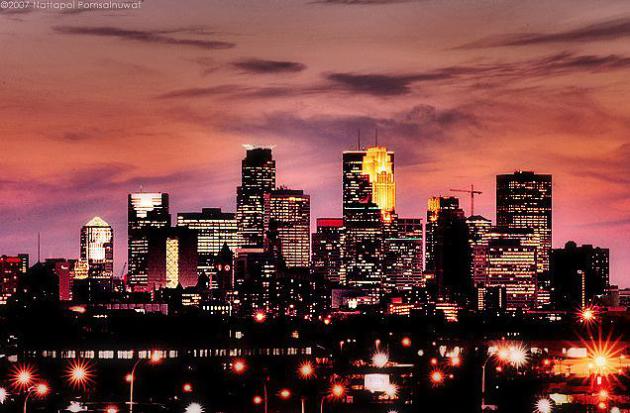


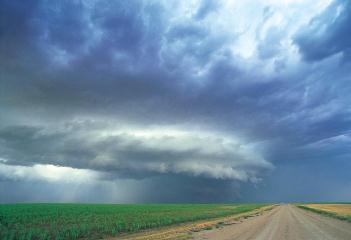
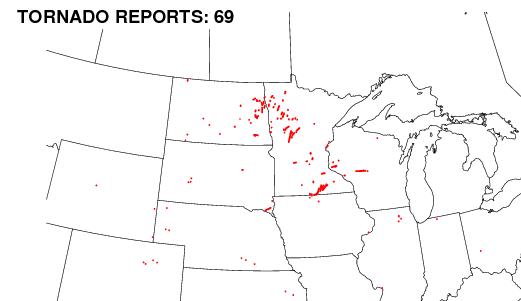
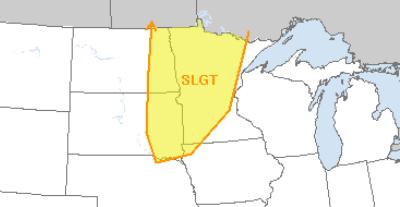
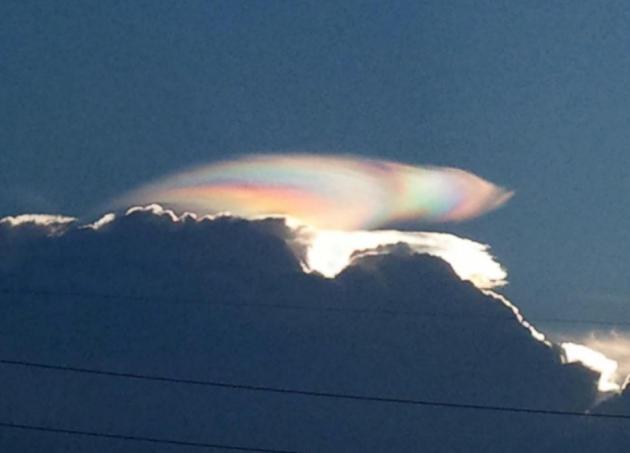

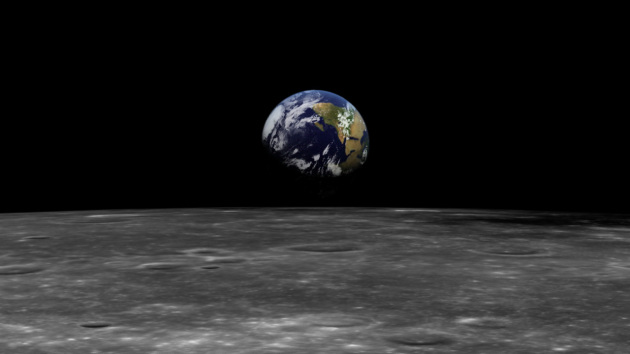
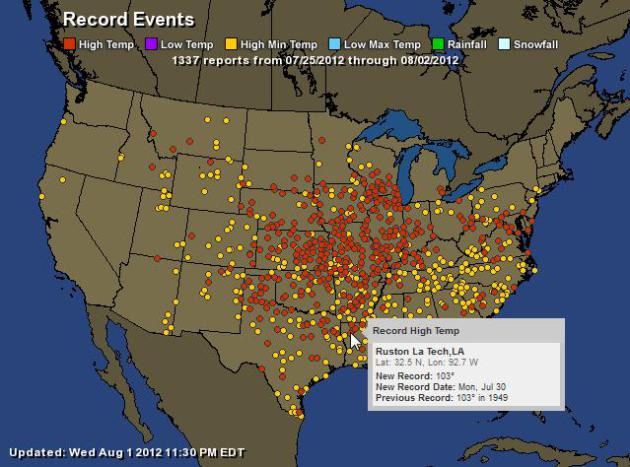
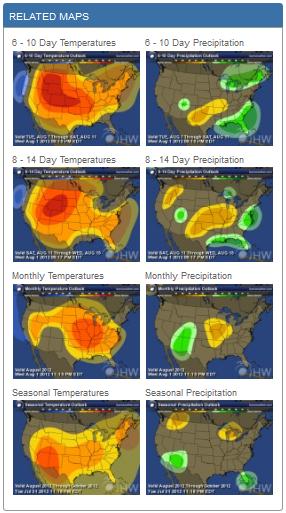
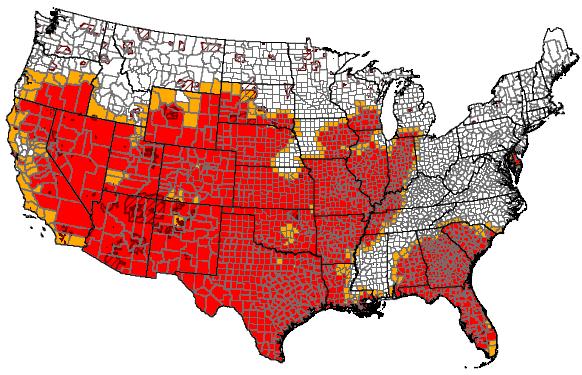
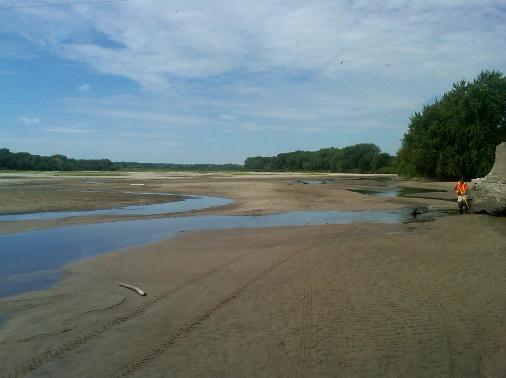





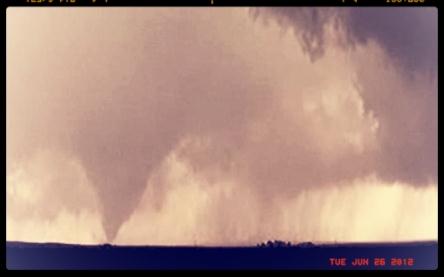
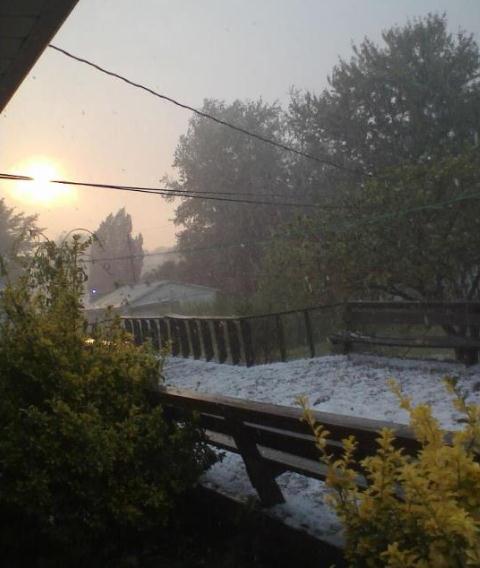
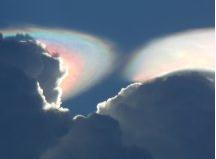




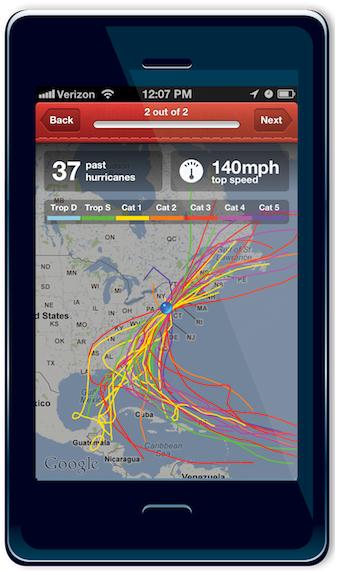


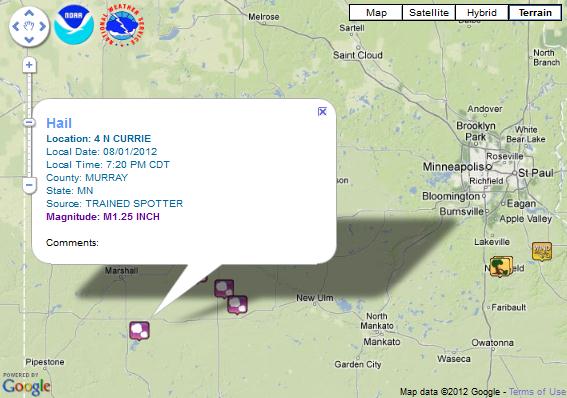
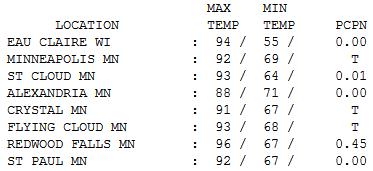
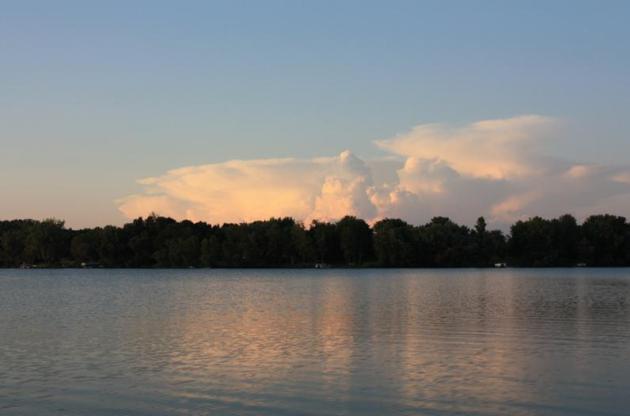


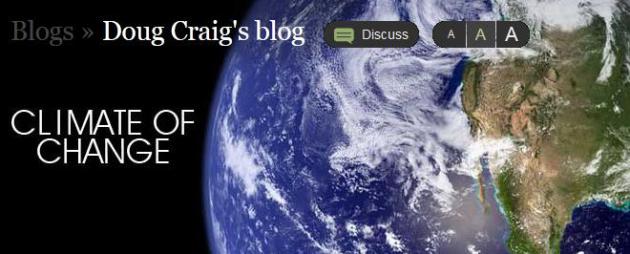
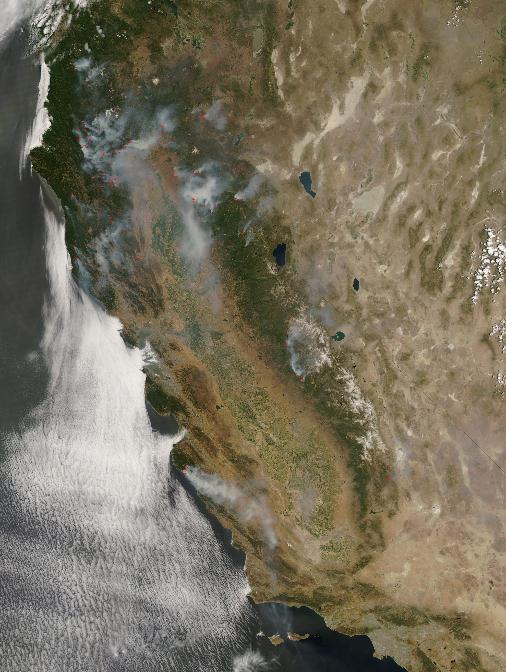
No comments:
Post a Comment